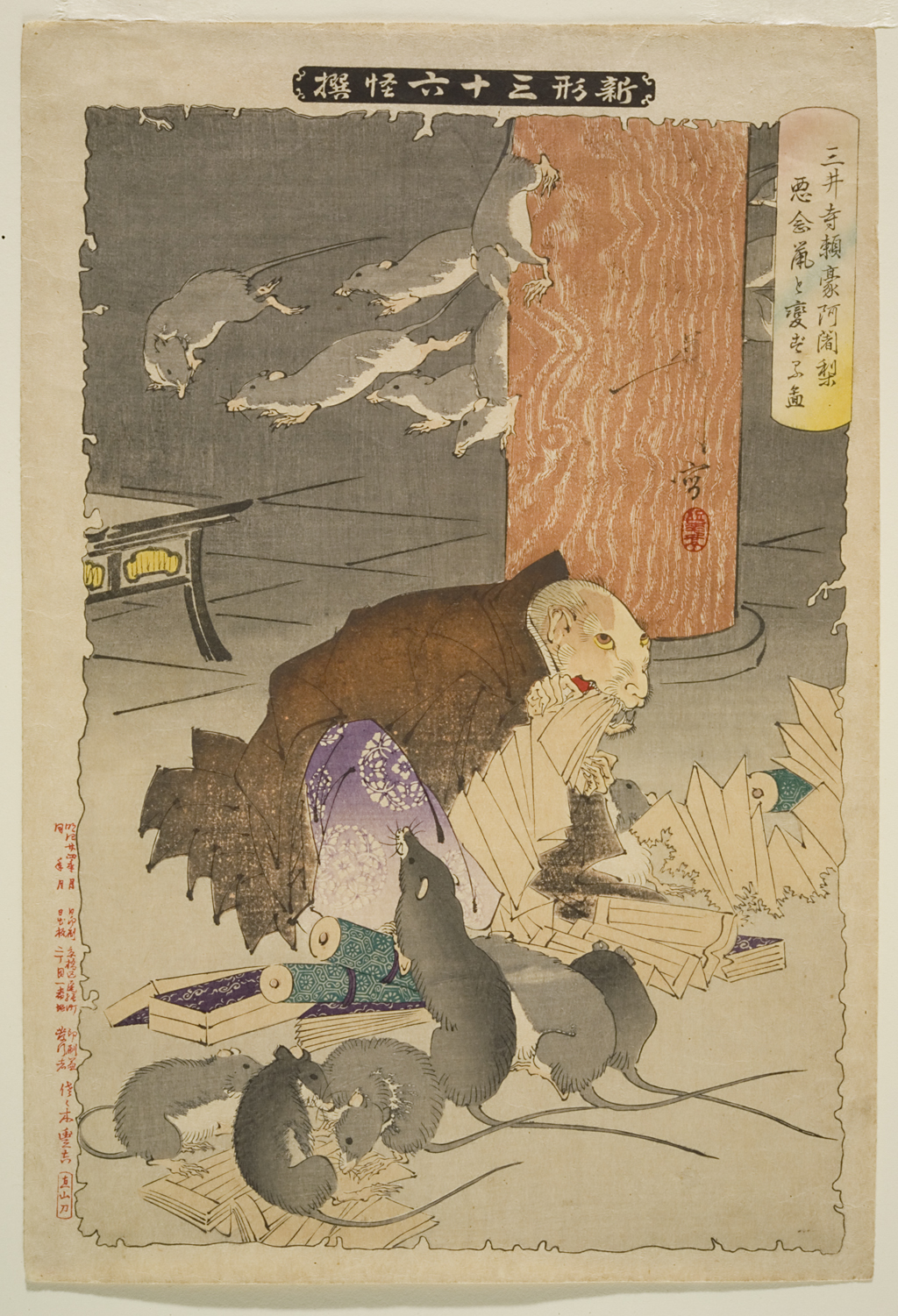Sacred Space and Japanese Art at the Spencer Museum of Art
Entry by Emily Cowan
This photo features the landscape around the five-story pagoda at Kōfukuji temple across from Sarusawa Pond, which is considered one of the Eight Views of Nara. In the fall of 1465, the Zen monk Kikei Shinzui (1401–1469) accompanied Shogun Ashikaga Yoshimasa (1436–1490) on a trip to Nara and listed its eight renowned scenes in his diary Inryōken nichiroku (Inryōken diary). Since then, they have been popular sites for both Japanese and foreign tourists. This photo is one page in a souvenir album, likely created by foreign photographers in the late 19th century. The photo album became a popular format for recording landscape at the time.
Since the eighth century, Sarusawa Pond has been the subject of numerous imaginative tales. For example, Tale of Yamato, written in the 10th century, tells the story of a lady-in-waiting who fell into the emperor’s disfavor and committed suicide by throwing herself into the pond. Hearing the news, the emperor, deeply distressed, went to the pond and asked his attendants to compose a poem in her memory. Legend also has it that because a dragon dwells in the pond, no matter how dry the weather, the pond is always filled with water. Tales of the pond have inspired people to ponder its mystery, beauty, and power.

